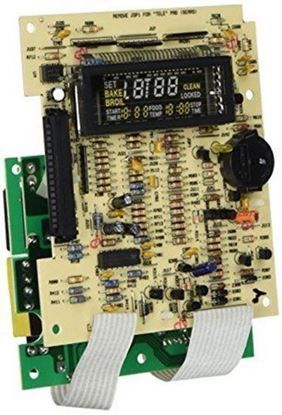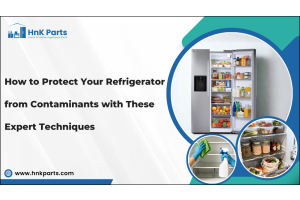
12 Common Appliance Issues & Solutions: Explore Now
Home appliances like washing machines, dishwasher, refrigerators and microwaves are indispensable for modern-day living. They make our daily chores easier and more convenient. However, there are times when these appliances encounter issues, leaving homeowners feeling frustrated and inconvenienced. The thought of resorting to handwashing clothes or reheating food on the stove can be daunting when appliances suddenly stop working.
While certain malfunctions require professional expertise or even replacement, many common appliance problems can be resolved by homeowners themselves. In this article, we will explore the most home appliance repairs that you can tackle on your own.
| Table of contents: Microwave Oven Problems Dryer Problems Refrigerator Problems Dishwasher Problems Washing Machine Problems Stove problems |
Microwave Oven Problems
Microwave ovens offer convenience and efficiency in reheating, cooking, and defrosting food. Here are the two most common microwave issues and their possible solutions:
1.Blown Microwave Fuse
A blown fuse can render your microwave completely non-functional or cause it to stop heating up. The main fuse in a microwave can blow due to various reasons, including excessive electrical current flow or overheating. If your microwave has overheated, there is a high chance that the main fuse has blown. Unfortunately, blown fuses cannot be reused, so the best course of action is to replace them.
Possible Causes:
- Misaligned door
- Overheating caused by a malfunctioning fan
- Broken door interlock switches
- Short circuit in the magnetron, power cord, or controller
- High voltage diode short
How to Fix It:
- Unplug the microwave from the power outlet to ensure your safety.
- Before servicing the microwave capacitor, discharge it by placing screwdriver blades on each capacitor terminal.
- Detach the thermoprotector or the blown fuse from your microwave.
- Use a multimeter to measure the reading of the capacitor. Ensure that your multimeter is set to the lowest range.
- If the multimeter doesn't display any charge, it indicates a blown fuse.
- Replace the blown fuse with a new one.
Check out these 5 Best Microwave Cleaning Hacks & make your cleaning process easier
2 Microwave Plate Not Moving
If the microwave oven plate fails to rotate, it can result in unevenly cooked food. The rotating plate is crucial for distributing heat evenly and ensuring proper cooking.
Possible Causes:
- Faulty roller guide underneath the tray
- Faulty drive coupler
- Faulty drive motor
How to Fix It:
For a faulty motor:
- Disconnect your microwave from the power source.
- Locate the motor and disconnect its wires.
- Use a multimeter to check for continuity at the motor's terminals.
- If there is no continuity, it indicates a faulty motor.
- Replace the faulty motor with a new one.
For a faulty coupler:
- Unplug your microwave from the socket.
- Remove the roller guide and the tray.
- Inspect the coupler for signs of wear or cracks.
- Detach the worn-out coupler from the motor and replace it with a new one.
For a faulty roller guide:
- Inspect the roller guide by removing the tray.
- Check the outer rollers for any damage or cracks.
- Examine the hub to ensure it securely holds the coupler.
- If the roller guide is damaged, replace it with a new one.
Dryer Problems
Dryers make laundry tasks much more convenient and efficient. Here are some of the most common dryer problems and how to troubleshoot them effectively.
3 Clothes Are Warm but Not Dry
If you find that your clothes are warm but still damp after a drying cycle, the most likely cause is overloading the dryer. To resolve this, simply remove some clothes to reduce the load and run the dryer for another cycle. If the problem persists even with a lighter load, it could be due to a faulty heating part.
Possible Causes:
- Clogged dryer vent pipe
- Faulty heating element
How to Fix:
For faulty heating parts:
- Unplug your dryer from the power outlet.
- Detach the back panel and locate the faulty heating part.
- Disconnect the wires and replace the faulty heating element with a new one.
- Reconnect the power and run a test cycle.
For clogged ducts:
- Disconnect the dryer from the power supply.
- Remove the dryer vent pipe from the wall.
- Clean the lint cover and the vent pipe thoroughly (you can use a vacuum cleaner or an auger snake to unclog the pipe).
- Wash the vent cover with warm soapy water.
- Reattach the vent pipe and lint cover.
- Test run your dryer to check if the issue is resolved.
Read on to find out more about How To Clean A Dryer in 9 Easy Steps
4 Dryer Drum Not Spinning
If you hear the humming sound of the dryer motor but the drum isn't spinning, there might be an issue with some of the dryer's components.
Possible Causes:
- Worn-out drum rollers
- Worn-out roller axles
- Worn-out drum bearings
- Worn-out drum glides
- Damaged drive belts
How to Fix:
- Unplug the dryer from the power outlet to ensure safety.
- Remove the rear panel of your dryer to access the internal components.
- Inspect the drum rollers, axles, bearings, and glides for signs of wear and tear.
- If any part is worn out, purchase a replacement from your local hardware store.
- For worn-out drum glides, remove them from their holes and replace them with fresh padding.
- If the drive belt is damaged, remove it from the hooks and drum and replace it with a new one.
Refrigerator Problems
Refrigerators provide us with a convenient way to store and preserve our food. They play a vital role in keeping our perishable items fresh and safe to consume. Let us explore some common refrigerator problems and their possible solutions.
5 Water Leakage
One of the most common issues faced by refrigerator owners is water leakage. This problem often arises due to the accumulation of food particles or ice cubes in the drain hose, causing it to become clogged. It is crucial to address this problem promptly, as water leakage can be hazardous, especially when it comes into contact with electricity.
Possible Causes
- Clogged defrost drain: The drain hose may become blocked by food particles or ice cubes, leading to water leakage.
- A leak in the waterline: If there is a crack or damage in the waterline connected to the refrigerator, it can result in water leakage.
- Brown drain pan: The drain pan, located underneath the refrigerator, may be cracked or damaged, causing water to leak out.
- High humidity: Excessive humidity in the surrounding environment can also contribute to water leakage.
Solutions:
- Disconnect from electric sources: Before attempting any repairs, ensure that the refrigerator is unplugged to avoid electrical hazards.
- Remove all food and drinks: Empty the refrigerator completely to prevent contamination during the repair process.
- Clear the clogged drain hose: Use a plumbing snake to carefully unclog the drain hose. Insert it deeply into the hose and move it back and forth until the obstruction is cleared.
- Use baking soda: Sprinkle approximately 1/2 teaspoon of baking soda into the drain and let it sit for a few minutes. Then, pour 2 to 3 cups of hot water into the drain to help dissolve any remaining blockages.
For more information check out how to clean a refrigerator step-by-step
6 Working Freezer, Faulty Fridge
Another common problem that refrigerator owners encounter is a working freezer but a faulty fridge. This issue can lead to food spoilage if not detected early. While a malfunctioning thermistor is often the primary cause, a damaged evaporator fan motor can also be responsible.
Possible Causes:
- Bad Thermistor: The thermistor, which senses the temperature inside the refrigerator, may be faulty or damaged, resulting in improper cooling.
- Evaporator fan motor: If the fan motor responsible for circulating cold air from the freezer to the refrigerator compartment is malfunctioning, it can lead to an ineffective cooling system.
Solutions:
- Check the resistance of the thermistor: Use a multimeter to measure the resistance of the thermistor. If it does not show continuity, it indicates a faulty thermistor that needs to be replaced with a new one.
- Inspect the motor: Unusual noises coming from the fridge may indicate a faulty fan motor. Examine the motor for any signs of damage or malfunction.
- Replace the motor: If the fan motor is determined to be faulty, it should be replaced with a new one to ensure proper airflow and cooling within the refrigerator.
Dishwasher Problems
A dishwasher helps save time and effort by efficiently cleaning and sanitizing dishes. However, like any other appliance, dishwashers can encounter problems that may hinder their proper functioning. Let us find out some common dishwasher issues and provide solutions to resolve them.
7 Dishwasher will not start
One frustrating problem is when your dishwasher refuses to start. There could be several reasons for this issue, including a blown fuse or a stuck motor. To troubleshoot this problem, you should first check the power connection. If the dishwasher is properly connected to a power source, the problem may lie internally.
Possible Causes:
- Blown circuit breaker or outlet
- Defective door lock
- Faulty motor
- Faulty control panel
- Faulty internal components
Solutions:
- If there is a blown circuit breaker, disconnect the power from the main source to prevent electric shock. Then, locate and check the fuse in the control panel. Replace the blown fuse with a new one.
- For a defective door lock, open the door panel and locate the switch. Use a multimeter to check for continuity. If there is no continuity, replace the switch with a new one.
- If the motor is stuck, try manually spinning the fan motor to see if it rotates. If it doesn't, further inspection or professional assistance may be required.
8 Bad Smell
Another common issue with dishwashers is a persistent bad smell. This unpleasant odor can be caused by food remnants or melted plastic inside the dishwasher. Failure to clean the dishes properly before washing and lack of regular maintenance can contribute to this problem.
Possible Causes:
- Food scraps sticking in filters or crevices
- Oil and grease build-up leading to bacteria growth
- Lack of maintenance
Solutions:
- Check inside your dishwasher for any food debris. Use a brush or toothpick to remove any stuck particles from the passageways.
- Drain stagnant water from your dishwasher.
- Thoroughly clean the interior of your dishwasher using a rag and soapy water. Pay attention to corners, crevices, and the dishwasher screen.
- Run a cycle with hot water and a dishwasher cleaning agent to eliminate any remaining odor-causing agents.
- To prevent future odors, make sure to remove all leftover food from your dishes before loading them into the dishwasher. Avoid overloading the dishwasher, as this can lead to inefficient cleaning.
Washing Machine Problems
Washing machines provide us with the convenience of easily washing our clothes. They have become an integral part of our daily lives, saving us time and effort. The common issues that washing machine owners often face and solutions to resolve them are discussed below:
9 Washing machine won't start
One of the major issues with washing machines is when they fail to start. There can be several reasons behind this problem. Firstly, a blown fuse or a tripped circuit breaker could be the culprit. To troubleshoot this issue, you should check the connection of your washing machine and ensure that it is properly connected to a power source. If the connection is fine, the problem may lie within the internal components of the machine, such as a faulty motor or control panel.
Solution:
Blown circuit breaker or outlet:
- Disconnect the power from the main source to avoid electric shock.
- Locate the fuse in the control panel and check if it's blown.
- If the fuse is defective, remove it and replace it with a new one.
Defective door lock:
- Open the door panel and locate the door lock switch.
- Use a multimeter to check for continuity in the switch.
- If there is no continuity, replace the switch with a new one.
Stuck motor:
- Try manually spinning the fan motor to check if it rotates freely.
- If it doesn't rotate or feels stuck, there may be an issue with the motor that requires professional repair.
10 Unpleasant odor from the washing machine
Another common problem faced by washing machine users is the presence of a bad smell. This can occur due to various reasons, including food remnants or debris getting stuck in the filters or crevices of the machine. Oil and grease buildup can also lead to the growth of bacteria, resulting in an unpleasant odor. Additionally, melted plastic from accidentally washing items with plastic parts can contribute to the foul smell.
Solution:
Food scraps or debris:
- Inspect the interior of your washing machine for any food particles or debris.
- Use a brush or toothpick to remove any stuck food from the passageways.
- Drain any stagnant water present in the machine.
- Clean the interior of the washing machine thoroughly using a rag and soapy water.
- Pay special attention to the dishwasher screen and wipe it clean.
- Run a hot water cycle without any clothes to eliminate any remaining odor.
Know more about the 10 Most Common Washing Machine problems and solutions.
Stove Problems
Stoves provide us with the means to cook meals, prepare delicious dishes, and create warm and comforting moments in our kitchens. Here are the most common stove problems and their possible solutions.
11 Uneven Heating
One common issue with stoves is uneven heating. You may notice that certain areas of your stove's burners or oven don't distribute heat evenly, resulting in undercooked or burnt food. This problem can stem from various causes, such as a malfunctioning burner element, faulty temperature sensor, or clogged gas orifices.
Cause:
- Malfunctioning burner element
- Faulty temperature sensor
- Clogged gas orifices
How to fix:
- For a malfunctioning burner element, you can replace it by following the manufacturer's instructions or seek professional assistance.
- If the temperature sensor is causing the issue, you might need to replace it. Refer to your stove's user manual or consult a technician for guidance.
- In the case of clogged gas orifices, carefully clean them using a small brush or compressed air. Ensure the stove is turned off and disconnected from the gas supply before attempting any cleaning. If you're unsure, it's best to contact a professional for assistance.
12 Ignition Problems
Another common problem that stove owners may encounter is ignition issues. Your stove's burners may fail to ignite, making it impossible to cook or heat food. This can be frustrating, especially when you're in a rush or have hungry mouths to feed. Ignition problems can arise due to a faulty ignition switch, a worn-out spark module, or a clogged ignition port.
Cause:
- Faulty ignition switch
- Worn-out spark module
- Clogged ignition port
How to fix:
- If the ignition switch is the culprit, it may need to be replaced. Consult the manufacturer's instructions or seek professional help for proper replacement.
- A worn-out spark module can also cause ignition problems. Similar to the ignition switch, it may need to be replaced following the appropriate instructions.
- In the case of a clogged ignition port, you can carefully clean it using a soft brush or a pin. Ensure the stove is turned off and disconnected from the power supply before attempting any cleaning. If you're uncertain, it's best to contact a professional technician.
To Sum It Up
Maintaining and cleaning your appliances regularly can significantly reduce the likelihood of repair issues. However, if you do encounter a common problem, this article has equipped you with a simple guide to fix it yourself, saving you the need to call a technician. With proper attention and DIY solutions, you can keep your appliances running smoothly and prolong their lifespan.








